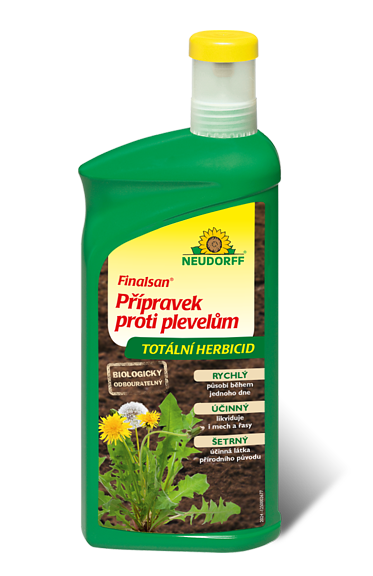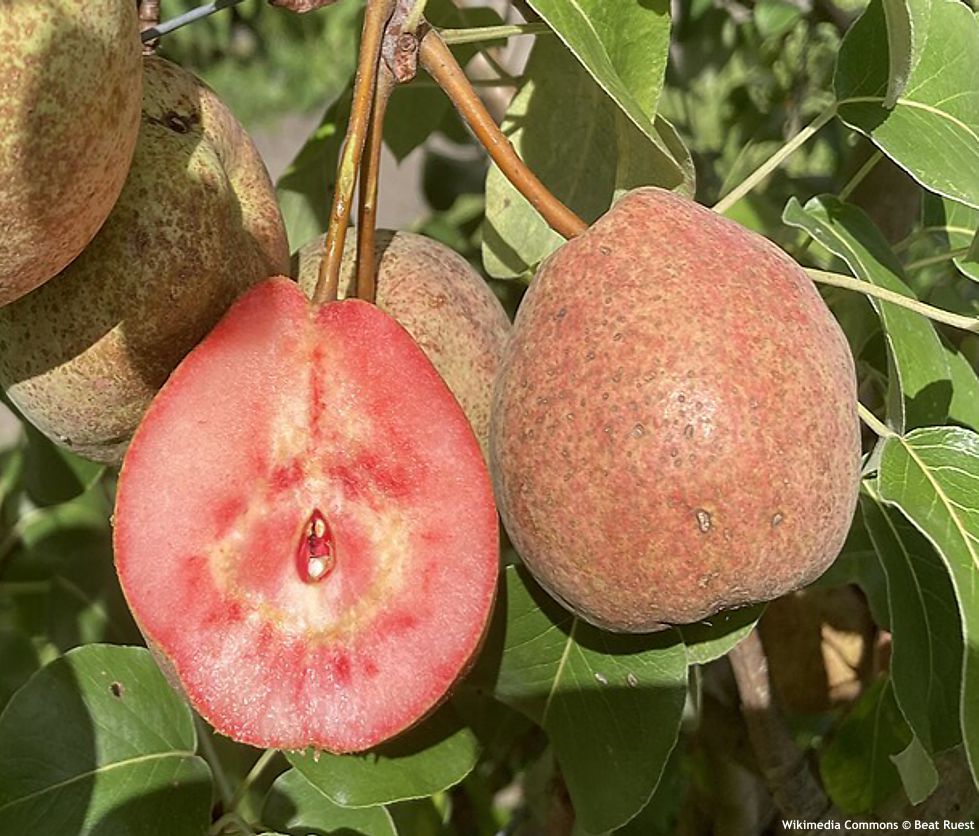Pyrus communis 'SOMMERBLUT' pear tree - medium early
Pyrus
The European pear (Pyrus communis) is one of the oldest fruit trees cultivated on the continent. It originates from the Caucasus and Asia Minor, from where it gradually spread across the Mediterranean and further north. Ancient authors such as Homer and Theophrastus already mentioned the pear as a tree of abundance and sweet fruits, which became part of both diet and symbolism. In Europe, pears have been grown continuously for more than two thousand years, and through centuries of breeding hundreds of cultivars have arisen, differing in shape, taste, and ripening time.
The history of red‑fleshed pears, however, is much more recent. While red‑fleshed apples have been known since the 19th century, pears with similar traits appeared only in modern times. In Germany, selections with strong anthocyanin pigmentation began to emerge, and for their unusual character they were grouped into the Vampira series – a collection of fruit trees with red flesh.
The name of the pear cultivar Sommerblut ('Summer Blood') refers both to its ripening season and to the deep red color of its flesh, which is striking and unexpected. Its fruits ripen in August to September and are small to medium in size, shaped like petite butter pears. At first glance they show a greenish‑yellow skin with a red blush, but the real surprise lies inside – the flesh is deep red to wine‑colored, juicy and crisp. The taste is sweet‑tart, refreshing, with a subtle woodland note that sets it apart from classic butter pears. Thanks to the high anthocyanin content, the fruit is not only visually attractive but also nutritionally interesting. The pears are suitable for fresh eating, but they shine especially in juices, ciders, and perries, where the ruby color gives the drink a unique appearance and character. They cannot be stored.
The tree grows with medium vigour and forms a regular, rather upright crown that spreads with age to about five to seven meters in width. On seedling rootstock, it reaches ten to fifteen meters in height and is long‑lived; on weaker rootstocks such as quince or Pyrodwarf it remains smaller and comes into bearing earlier. It flowers in May with white blossoms that are self-sterile, so it requires suitable partners nearby. The best pollinators are cultivars flowering in the same period, such as ‘Conference’, ‘Williams’, ‘Clapp’s Favourite’, or ‘Bosc’. With its unusual character and attractive fruit, ‘Sommerblut’ is a welcome highlight in gardens and collections of rare fruit trees.
Pears are not demanding to grow. They thrive best in full sun but will tolerate partial shade. The soil should be loamy to sandy‑loam, well‑drained yet moderately moist, with a pH from slightly acidic to neutral. In the first years after planting, young trees should be tied to a stake, and high‑stem forms secured with a strong windbreak support, to ensure a straight trunk and stable root system. Fertilization is possible, preferably organic but not needed, and pruning is not required either – only a gentle thinning of the crown at the end of winter, more for aesthetics than necessity. The tree is hardy to at least –34 °C (USDA zone 4) and requires no winter protection.
Last update 22-10-2025

960,5 Kč

1 062,5 Kč
Goods are shipped all over Europe. For Russia and U.K. and for further details please read about SHIPPING OPTIONS HERE.
Are you interested in a serious discount for orders NOV-FEB? Check your options here.
THE PRICES INCLUDE VAT of 15%. For quick conversion you can use 1 CZK = approx. 0.04 EUR
- STANDARD QUALITY - Plants of this group are 1st class quality with number of branches and overall density adequate to their size and age, considering they were container grown.
- DE LUXE QUALITY - This label guarantees a luxurious quality of manually selected plants that, compared to their height and age, are exceptionally dense and beautiful.
- EXTRA - These plants are usually mature and bigger specimens with exceptional overall appearance.
- STANDARD (as described in the plant form) means a tree with a trunk of 190-210 cm and a crown at the top, unless specified differently. The commercial size for trees is their girth measured in the height of 1m from ground.
- HOBBY - These plants are of the same quality as our standard-quality plants but younger and therefore cheaper.
- SHRUB - a woody plant with branches growing bushy from the ground level.
- HALF-STANDARD or MINI-STANDARD - a small tree with shorter trunk, its size is usually specified.
- FEATHERED - These are trees with branches growing already from the base of the trunk and up along the stem.
- GRASSES and PERENNIALS - Sizes given usually read the diameter of the pot or the clump, as specified.

































.jpg)


